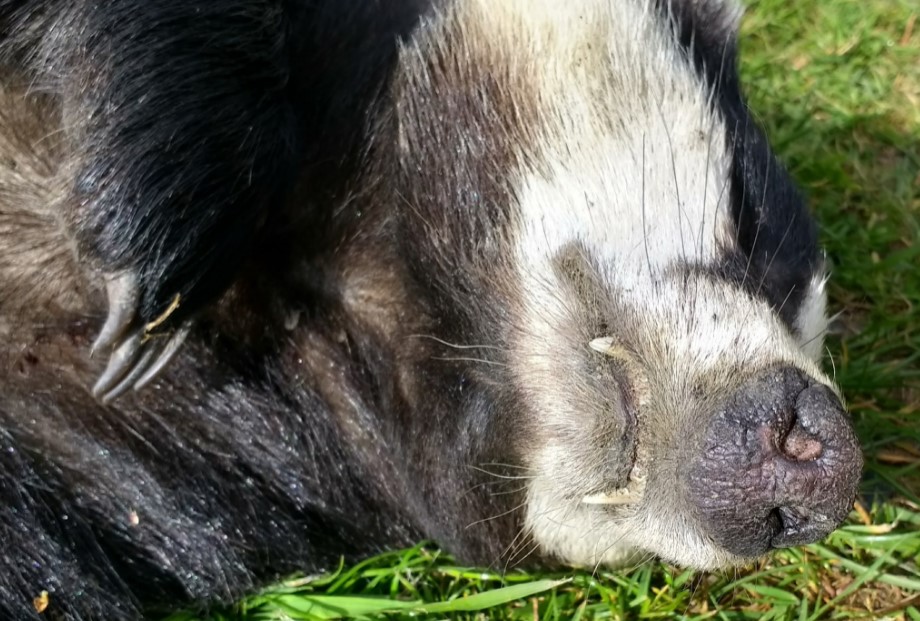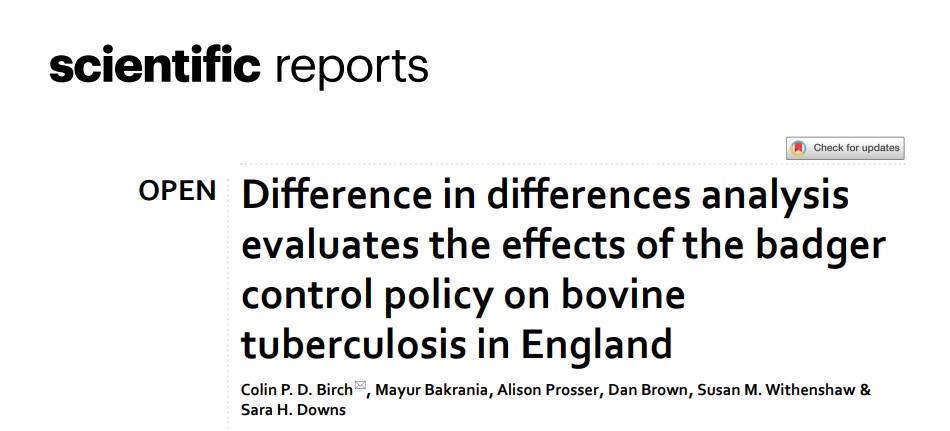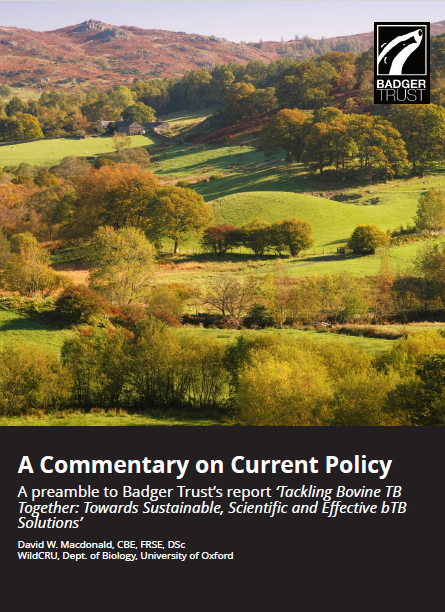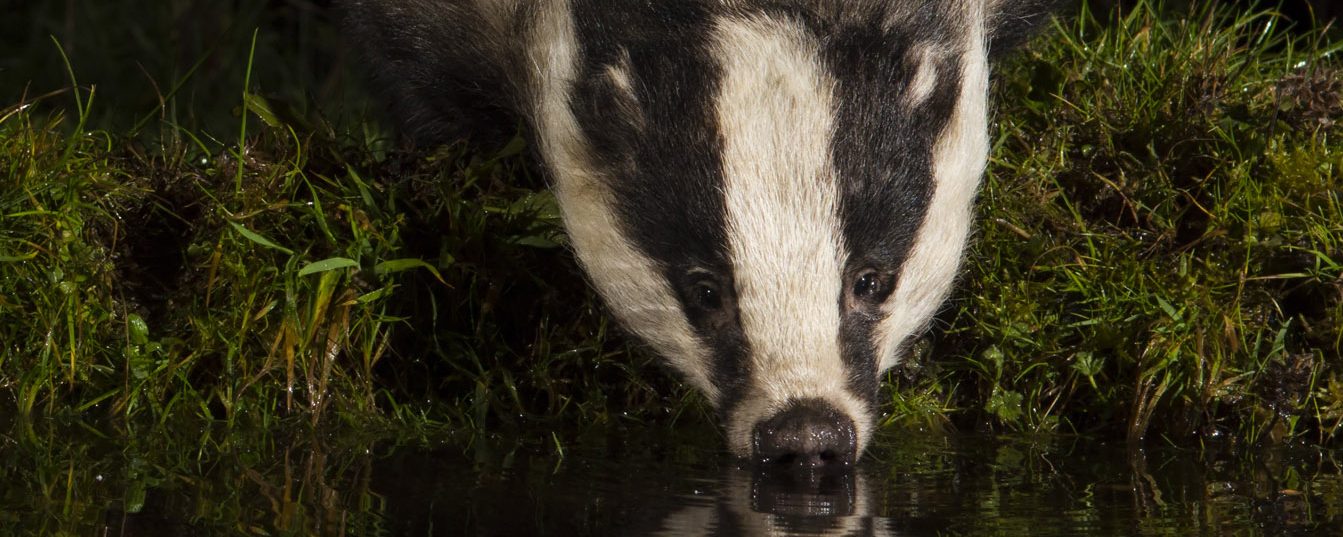
 On 14th March 2024, Defra launched a 5-week consultation on the next steps to ‘evolve’ what they call ‘badger control policy’. This is a poorly termed label for a combination of cattle testing and badger killing. The consultation period was extended by three weeks following three legal letters stating specifically that the 5 week consultation period was too short and that an 8 week extension period would be appropriate, (see here).
On 14th March 2024, Defra launched a 5-week consultation on the next steps to ‘evolve’ what they call ‘badger control policy’. This is a poorly termed label for a combination of cattle testing and badger killing. The consultation period was extended by three weeks following three legal letters stating specifically that the 5 week consultation period was too short and that an 8 week extension period would be appropriate, (see here).
Yet Defra’s plans for what they call ‘targeted’ badger culling are now in doubt following the landslide victory by Labour on 5th July. In a legal communication that Badger Crowd has seen, before the election Defra had stated that they are “continuing to analyse consultation responses with a view to putting proposals for a decision on this policy to the incoming government after the election.” So Labour will now decide the future for badger culling in England, not the Conservative administration that is now defunct, with all of the multiple badger killers of the last decade or more resigned or voted out of office.
So what will Labour do? During the 2019 election campaign, Labour committed to a policy of ending badger culling. The current Labour administration have in recent years confirmed this from time to time. More recently, however, it has been less clear about their exact intentions. Steve Reed, (now the new Secretary of State for Environment, Food and Rural Affairs) has said that some badger culling may/would need to continue to complete the existing commitments of current policy. This is a row-back with which we would disagree strongly. All badger culling should be ended in July 2024. However, the Labour manifesto states that badger culling has been ineffective. New science supports this. What is needed is the application of proven cattle-based disease control measures and the bringing forward of new test approaches.
How did we get here?
The intensive badger culls have been in progress since the policy began in 2013, bringing the total killed to around 230,000. Already around 20,000 badgers have begun to be shot from June 1st this year, with more in the sight-lines next year, and that is without any new ‘targeted’ culling plans on top. Culled badgers have been predominantly healthy, killed on the premise of a hypothetical disease perturbation effect and supposed average 16% annual reduction in TB infections in cattle from culling, a concept designed by mostly Oxford academics that is now widely recognised as unsafe science.
 The recently published paper by Defra staff (Birch et al. (2024)) was being used to justify further culling in the recent consultation, and claim that the culling programme thus far has been successful. With the Minister Steve Barclay stating “bovine TB breakdowns in cattle are down by on average 56% after four years of culling”. By sleight of presentation, he immediately confuses cause and effect. Authors of Birch acknowledge (on careful reading) that while they may speculate, the overall result cannot be attributed to badger culling: all disease measures implemented, including extensive testing, were analysed together with no control. There was no comparison of culled and unculled areas. It is far more likely to be cattle measures causing reduction in disease than badger culling, because decline began well before culling was rolled out. And in response to the introduction of annual SICCT testing in 2010 and short interval testing of infected herds. In truth it cannot attribute benefit and provides no insight at all. Other cattle-based measures were also introduced alongside culling. So it’s been more ‘fake 56% news’ confirmation bias from the ousted government.
The recently published paper by Defra staff (Birch et al. (2024)) was being used to justify further culling in the recent consultation, and claim that the culling programme thus far has been successful. With the Minister Steve Barclay stating “bovine TB breakdowns in cattle are down by on average 56% after four years of culling”. By sleight of presentation, he immediately confuses cause and effect. Authors of Birch acknowledge (on careful reading) that while they may speculate, the overall result cannot be attributed to badger culling: all disease measures implemented, including extensive testing, were analysed together with no control. There was no comparison of culled and unculled areas. It is far more likely to be cattle measures causing reduction in disease than badger culling, because decline began well before culling was rolled out. And in response to the introduction of annual SICCT testing in 2010 and short interval testing of infected herds. In truth it cannot attribute benefit and provides no insight at all. Other cattle-based measures were also introduced alongside culling. So it’s been more ‘fake 56% news’ confirmation bias from the ousted government.
 Writing in a preamble to Badger Trust’s report ‘Tackling Bovine TB Together’, key badger ecologist and original RBCT scientist Professor David MacDonald writes that the authors of Birch “… do not claim to have measured the consequences of badger culling, and indeed they have not”, and, “there is still no clearcut answer regarding the impact of this approach to badger culling on controlling bTB in cattle or, more broadly, whether it’s worth it.”
Writing in a preamble to Badger Trust’s report ‘Tackling Bovine TB Together’, key badger ecologist and original RBCT scientist Professor David MacDonald writes that the authors of Birch “… do not claim to have measured the consequences of badger culling, and indeed they have not”, and, “there is still no clearcut answer regarding the impact of this approach to badger culling on controlling bTB in cattle or, more broadly, whether it’s worth it.”
 Badger culls have previously been justified using the (now dumped) and guess-based ‘Risk Pathways’ approach of the Animal Plant and Health Agency (APHA) that purported to explain how disease arrives in a herd. Its ‘tick-based’ veterinary questionnaires implicated badgers as the default primary source of disease when adequate information and investigation was lacking. Following publication of the report ‘A bovine TB policy conundrum in 2023‘, in April 2023, (that led to the ‘dumping’), and with the speculative nature of their approach well exposed, APHA are now planning to use Whole Genome Sequencing (WGS) and a sample of dead badgers to try to justify culling on a local basis. These two methods of pinning blame on badgers fall desperately short however, as they do not prove an exact route or rate of transmission from badger to cow. Such a route may not even exist, or may be occasional or exceptional, occurring as a result of the constant infection of the countryside by infected cows. Badgers will just be getting bTB from cows, as with strain 17z in Cumbria, and rarely if ever giving it back. The proposed system for justifying badger-blame is still rigged, unscientific and unethical veterinary practice.
Badger culls have previously been justified using the (now dumped) and guess-based ‘Risk Pathways’ approach of the Animal Plant and Health Agency (APHA) that purported to explain how disease arrives in a herd. Its ‘tick-based’ veterinary questionnaires implicated badgers as the default primary source of disease when adequate information and investigation was lacking. Following publication of the report ‘A bovine TB policy conundrum in 2023‘, in April 2023, (that led to the ‘dumping’), and with the speculative nature of their approach well exposed, APHA are now planning to use Whole Genome Sequencing (WGS) and a sample of dead badgers to try to justify culling on a local basis. These two methods of pinning blame on badgers fall desperately short however, as they do not prove an exact route or rate of transmission from badger to cow. Such a route may not even exist, or may be occasional or exceptional, occurring as a result of the constant infection of the countryside by infected cows. Badgers will just be getting bTB from cows, as with strain 17z in Cumbria, and rarely if ever giving it back. The proposed system for justifying badger-blame is still rigged, unscientific and unethical veterinary practice.
Refuting peer-reviewed science
In the new consultation, Defra are at pains to continue to refute a study in the journal Veterinary Record (18 March 2022) by Tom Langton and veterinarians Mark Jones and Iain McGill. They do this on the basis of an un-peer reviewed letter published at the same time, which used incorrect data and made incorrect assertions about the methodology used, that was later corrected with some confused and unsubstantiated remarks. So where, 2 years later, is their measured alternative? Nowhere, because they can’t produce anything, even holding all the extensive data on individual farms in secret, as they do and always have. There are many ways they could test the data, so why don’t they? Or have they tested it but don’t like the results? There was no peer-reviewed rebuttal to Langton et al. under the old Conservative leadership with Defra refusing to meet and discuss. We have blogged about this sorry tale here and here and here.
 Langton et al. 2022, was done in the most logical and clear-cut way using all the data. It shows what happens as unculled areas become culled, from 2013 onwards. The paper has two main findings. The first is really good news for farmers, cows and badgers. Data suggests that the cattle-based measures implemented from 2010, and particularly the introduction of the annual tuberculin skin (SICCT) test are responsible for the slowing, levelling peaking and decrease in bovine TB in cattle in the High Risk Area (HRA) of England during the study period, all well before badger culling was rolled out in 2016.
Langton et al. 2022, was done in the most logical and clear-cut way using all the data. It shows what happens as unculled areas become culled, from 2013 onwards. The paper has two main findings. The first is really good news for farmers, cows and badgers. Data suggests that the cattle-based measures implemented from 2010, and particularly the introduction of the annual tuberculin skin (SICCT) test are responsible for the slowing, levelling peaking and decrease in bovine TB in cattle in the High Risk Area (HRA) of England during the study period, all well before badger culling was rolled out in 2016.
The second finding came from looking at the amount of cattle bTB in large areas in the High Risk Area that had undergone a badger cull, and comparing it with the amount of disease in large areas in the High Risk Areas that had not had culling. It included a six year period 2013-2019, so before and after culling was rolled out. Multiple statistical models checked the data on herd breakdowns over time and failed to find any association between badger culling and either the incidence or prevalence of bovine TB in cattle herds. The models that most accurately fitted the data were those that did not include badger culling as a parameter, suggesting that factors other than culling (cattle testing) were more likely to be the cause of the reduction in disease in cattle. Badger culling efforts appear to be to no effect. A summary of this new research is available to read on our 18 March 2022 blog here. You can read an open access copy of the full paper here.
Natural England (NE) have been very slow to provide the public with the material on which licensing decisions have been made and have not been keen to share their full reasoning behind their continued licensing of mass slaughter of our most enigmatic of protected species. NE appear to be seeking to bale-out of involvement in culling badgers, but will sit around the edges facilitating it in the manner Tony Juniper has green-lighted for years.
Badger culling outcomes were always uncertain
With no analysis able to show a disease benefit from industry-led badger culling, the analysis from the original Randomised Badger Culling Trial (RBCT) remains pivotal to any decision to cull badgers. Recently published in Scientific Reports, Torgerson et al (2024) challenges the certainty of this original analysis. Read more about this here.
 Commenting on this work, Professor David MacDonald writes “They found that the conclusions of the 2006 analysis are sensitive to the method of analysis used. Indeed, the analytical approach that Torgerson’s team judge to be the most obvious for the purpose, provides no statistical evidence for a culling effect, whereas a model comparison method aimed at selecting a model with the best out-of-sample predictive power indicates that the best model does not include the treatment effect of killing badgers. According to those statistics, killing badgers during the RBCT made no difference to the herd breakdowns, whether measured by either OFT-W or by OFT-W + OFTS.” In other words, badger culling in the RBCT showed no measurable disease benefit using the most appropriate analyses. On this basis, all badger culling must stop immediately.
Commenting on this work, Professor David MacDonald writes “They found that the conclusions of the 2006 analysis are sensitive to the method of analysis used. Indeed, the analytical approach that Torgerson’s team judge to be the most obvious for the purpose, provides no statistical evidence for a culling effect, whereas a model comparison method aimed at selecting a model with the best out-of-sample predictive power indicates that the best model does not include the treatment effect of killing badgers. According to those statistics, killing badgers during the RBCT made no difference to the herd breakdowns, whether measured by either OFT-W or by OFT-W + OFTS.” In other words, badger culling in the RBCT showed no measurable disease benefit using the most appropriate analyses. On this basis, all badger culling must stop immediately.
The way forward
Rather than escalating badger culling to near 100% removal of the species from farmland (as demanded by the NFU), it is time to stop and implement the cattle-based measures that would finally get the disease under control. Dick Sibley has shown why cattle measures are failing, (see here). It is time to stop living in the past and putting faith in unsubstantiated beliefs that badgers have anything to do with bovine TB control. They don’t.

